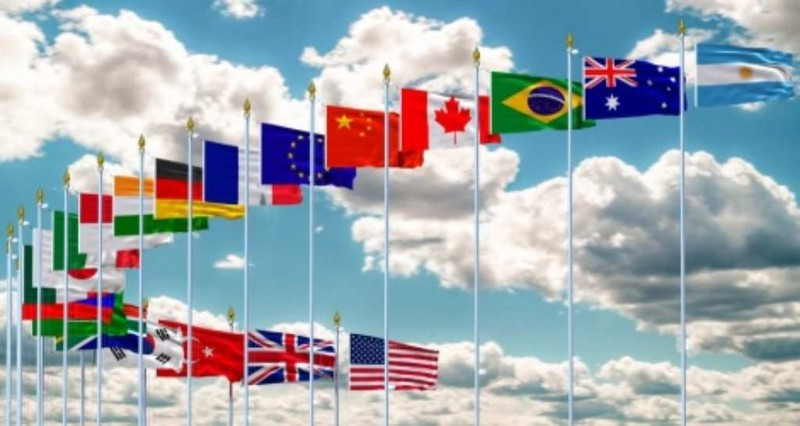In the recently released World Economic Outlook, the International Monetary Fund (IMF) has revised its growth forecasts of the global economy towards a slight increase. Accordingly, Global growth is expected to slow from 3.4% in 2022 to 2.9% in 2023. However, this new forecast is higher than the 2.7% forecast made by the IMF in October 2022, with a warning of a rising risk of a global recession.
The sign of prosperity of China - the world's second-largest economy, is considered an important "bump" for the global economy in 2023. The images of long lines of people queuing outside restaurants, crowded subway cars, and factories operating at maximum capacity, are signs showing that China's economy is gradually getting rid of the "black shadow of COVID-19".
According to Bloomberg Economics, China’s manufacturing and services expanded for the first time in four months, in the first month of 2023.
China's major economic powerhouses -- Guangdong, Zhejiang, Shandong and Sichuan provinces -- have set their 2023 growth targets at above 5%. The Chinese government urged efforts to promote a steady economic rebound for the beginning of the year, underscoring the need to facilitate a speedy resumption of business and production, after the Lunar New Year holiday.
Global growth is projected to fall from an estimated 3.4% in 2022 to 2.9% in 2023.
Bloomberg forecasts an acceleration in China's GDP from 3% in 2022 to 5.8% in 2023. The IMF revised China's growth outlook slightly higher for 2023, to 5.2% from 4.4% in October 2022.
Meanwhile, the eurozone economy looks set to avoid a recession this winter, after output nudged up only slightly by 0.1% in the fourth quarter of 2022. This figure is lower than the 0.3% growth recorded in the third quarter of 2022, but better than forecasts of a contraction by economists, in the context of the impact of the conflict in Ukraine, which caused energy prices to escalate and inflation continued to rise to record highs.
According to Oxford Economics, overall, the Eurozone has passed the worst period, both in terms of inflation and manufacturing activity.
Manufacturing activity in Europe is showing signs of recovery. Germany, Europe's largest economy, kicked off 2023 with a brighter outlook. Although demand has not been strong, inflation has cooled and supply chain problems have eased slightly.
Manufacturing activity in France, the eurozone's second-biggest economy, rebounded, though not as strongly as before. The French economy in the fourth quarter of 2022 grew 0.1%, lower than the 0.2% growth in the previous quarter, but still higher than the forecast of 0%.
The UK is the only advanced economy expected to fall into recession this year.
According to the New York Times (the US), Russia's foreign trade sector has largely returned to the level before the conflict in Ukraine broke out in February 2022. The Russian economy as a whole has proved more resilient than anticipated.
Russian President Vladimir Putin also assessed the country's economic situation as stable, with the achieved indicators not only better than forecast but also exceeding expectations. Unemployment in Russia is at a historic low, inflation is also lower than forecasted and tends to decrease.
However, risks to the global economy remain high. Manufacturing activity across Europe and Asia showed signs of shrinking again in January, reflecting the unsustainable progress of the global economic recovery. Inflation in the Eurozone has cooled down, but the optimism is not much because prices in general still increase.
The UK is the only major developed economy where the IMF predicts a recession this year. Asia's economy is still under great pressure and the "bump" from China's reopening has not yet spread widely. In the economic recovery roadmap, Asia is in dire need of a new growth engine.
















